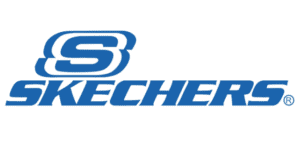How to Wash Workout Clothes – Ultimate Guide
-
 By
Sophia Grant
By
Sophia Grant

their longevity so that they’ll always be ready for your next gym session.
Table of Contents
ToggleChoosing the Right Detergent for Activewear
Conventional detergents struggle to eliminate sweat, odors, and stains from your sportswear, as they are not designed to penetrate the tight weaves of synthetic fibers.

Not only that but they also leave residues that trap sweat and oils, leading to unpleasant odors and making subsequent cleaning more difficult.
Activewear detergents, on the other hand, are adept at confronting these laundry issues. They contain non-toxic ingredients that are less likely to irritate sensitive skin and are gentle on the fabric of your high-performance activewear.
ACTIVE Detergent – The Best Choice For Workout Gear
ACTIVE Laundry Detergent stands out among its counterparts. The formula includes plant-based enzymes that will effectively break down sweat and odor-causing agents without harming the fabric or your skin.
Alternatives to Laundry Detergents
Dishwashing soap, shampoo, or even a grated bar of soap can serve as makeshift detergents in a pinch.
Remember to dissolve the bar soap in hot water and use vinegar or lemon juice in the rinse cycle to eliminate any detergent residue.
Preparing Your Workout Clothes for Washing
First things first, examine your activewear for any stains or areas that may need pre-treatment. Turning your garments inside out is also highly recommended. That will allow for an effective clean on the most sweat-affected areas and will also reduce color bleeding, and preserve fabric quality by minimizing friction.
Ensure all hooks are fastened, and zippers are closed to prevent tangling with other clothes during the wash cycle.
If your workout gear features decorative designs, sort and separate these items for extra protection against wear and potential damage.
Sorting by Fabric and Color
When it comes to washing, not all activewear is created equal. Sorting the garments in your laundry basket by fabric type and color before washing will help prevent damage and color bleeding.

Each fabric has specific care requirements during washing, and sorting them will ensure each type receives the attention it needs.
To minimize color bleeding, wash similar colors together. When mixing loads of different colors or fabric types, consider using a mesh bag – that will provide additional protection against snagging, especially for delicate fabrics.
Pretreating Stains and Odors
Sweat stains can be stubborn. But with an enzymatic stain remover, you can effectively treat color-based stains on workout clothes. For dirt, grease, or chalky deodorant marks, an oil-based remover is your go-to solution.
Persistent sweat odors can be a nuisance. Here’s a simple method to eliminate these odors before laundering:
Washing Techniques for Different Types of Activewear
With most types of activewear, you want to use a gentle cycle with cold water to protect the fabrics.
Leggings and athletic tights should be turned inside out before washing to preserve color and prevent fabric pilling. Placing them in a mesh washing bag will also protect them from snagging and damage inside the washing machine drum.

Activewear-specific detergent like ACTIVE Laundry Detergent can help maintain the elasticity of leggings and reduce the risk of pilling. Select a delicate cycle with cool water and a low spin when washing leggings to prevent shrinkage.
Athletic bras, on the other hand, should be hand-washed or machine-washed on a gentle cycle with cold water and mild detergent. When machine washing bras, be sure to place them in a mesh bag along with other delicate underwear to maintain their shape and prevent tangling.
These washing instructions can be followed to wash all kinds of activewear from any brands including:
- Afitne
- Albion Fit
- Alternative Apparel
- Ardene
- ASOS 4505
- ASRV
- Balance Athletica
- Baleaf
- Bandier
- Born Primitive
- Boody
- Boohoo Sportswear
- C9 Champion
- Calvin Klein
- Crossfit Clothing
- CRZ Yoga
- Dragon Fit
- Everlane
- Forever 21
- GAP
- Geyoga
- Good American
- Groceries Apparel
- GymDeity
- Hollister
- Indigo Luna
- IVY PARK
- Juno Active
- Kyodan
- Lemedy
- Levi’s Athleisure
- Lolë
- Mippo
- Missguided
- Nagnata
- Nimble
- No Nonsense
- North Face
- Oiselle
- Omkagi
- Onzie
- Organic Basics
- Outdoor Voices
- Pact
- Prana
- Pretty Green
- PrettyLittleThing
- Puma
- Real Essentials
- Reformation
- Rhone
- Running Girl
- Ryderwear
- Set Active
- Spiritual Gangster
- Splits59
- Squat Wolf
- STAX
- SUUKSESS
- Tamga Designs
- Tasc Performance
- Tentree
- The Gym People
- The Upside
- Threads 4 Thought
- Titika
- TMPL
- Tommy Hilfiger
- Universal Standard
- Upside Down
- Varley
- Wanayou
- WodoWei
- Year of Ours
- Zeeshy
Machine Washing Activewear
Most, if not all activewear can be put in the washing machine.
There are just a few steps to keep in mind.
Step 1: Place the Items In a Mesh Bag

Place your workout clothes in a mesh laundry bag before loading them in the washer. It will act as a physical barrier, preventing them from snagging and wearing out while the cycle is running.
Step 2: Add ACTIVE Detergent

Add one scoop of ACTIVE detergent to the wash basin. Skip the fabric softener and bleach.
Step 3: Run a Gentle Cycle

Run a delicate or gentle cycle with cold water. Take out the items once the cycle is finished and let them air dry in a well-ventilated area.
Supply:
- ACTIVE Detergent
- Mesh laundry bag
Never wash dark-colored items with light-colored items as that can lead to dye transfer.
ACTIVE Detergent
Safely deep cleans all types of workout clothes to remove odors at the source.

15% Off Your Order on Amazon
×Click below to reveal the 15% off coupon for your entire ACTIVE purchase on Amazon.com
How to Hand Wash Workout Clothes
Hand washing is the gentlest option when it comes to washing activewear. Use cold water and delicate detergent specifically designed for activewear to avoid damage.
Supplies:
- ACTIVE Detergent
- Water
Step 1:
Fill a large sink with cool or lukewarm water and add a small amount of ACTIVE Detergent powder to create a soapy solution.

Step 2:
Place your workout clothes in the sink, making sure the fabric is completely saturated with the solution.
Let it sit for 15 to 20 minutes.

Step 3:
Gently rub the fabric to loosen any remaining dirt and oils and rinse the item under running water.
Hang or lay flat to dry afterwards.

Drying and Caring for Your Activewear
The way you dry your clothes can affect their lifespan. If you want them to last, we recommend laying your activewear flat to dry and avoid using high heat settings in the dryer as that can lead to fabric damage.
Also, make sure to skip the fabric softener as it will leave a waxy layer that will hinder the fabric’s ability to wick moisture. It can also cause the clothing to lose its shape.
Your drying method can considerably affect the lifespan of your activewear.
Keeping your activewear clean and stored in a dry spot can deter bugs or larvae from being attracted to any lingering organic stains. To prevent pilling and maintain elasticity, consider using a sweater comb on areas of high friction and avoid exposing the clothes to heat.
Air Drying Techniques
Air drying is without a doubt the best drying technique for activewear. Skipping the tumble dryer is crucial as high heat can break down fibers and elastic, causing the clothes to sag and lose their performance capabilities.

Leggings should be laid flat to air dry to preserve their elasticity and prevent warping, while sports bras should be hung up to dry.
To minimize the risk of fiber degradation, activewear should be air-dried away from heaters or direct sunlight, in locations such as drying racks or clotheslines.
Machine Drying Precautions
While machine drying may be convenient, it can significantly shrink clothes due to mechanical agitation and forced air, impacting the activewear’s size and fit.
Repeated tumble-drying cycles can also weaken the fabric over time, leading to premature wear and tear.
To reduce the risk of fabric damage, always use the lowest heat setting.
Storing and Maintaining High-Performance Activewear

We recommend folding each item and storing them in a breathable area, rather than hanging. That will allow it to retain its shape and will also prevent the fabric from stretching.
Also, consider folding and stacking items vertically in drawers for easy viewing and access. You can also use boxes without lids for items that unfold easily.
By following these storage tips, you can ensure that your activewear stays in great condition for longer.
Don’t forget to cycle through your activewear collection to prevent rapid wear and tear. Also, be aware that hanging these garments can stretch elastane fibers and create pucker marks.
Folding vs. Hanging
Storing your folded activewear vertically in drawers offers several benefits. Not only will it preserve the form of your activewear but it will also enhance its visibility and accessibility, reduce time spent searching for specific items, and enhance your workout preparation process.
Organizing Your Activewear
Open-topped boxes are a great way to store your activewear as they’ll help prevent items like leggings, running shorts, and sports bras from becoming unfolded.
Employing a ‘filing technique’ to store clothes vertically in drawers can also maximize space efficiency and enhance the visibility and accessibility of individual items.
Small activewear accessories like socks and hair bands should be stored in drawers, which will help keep them organized.
Washing Workout Clothes – Overview

We’ve covered the importance of using activewear-specific detergent and alternatives, preparation before washing, and the best practices for machine and hand washing.
We’ve also provided valuable tips on air drying and machine drying precautions, along with advice on how to store and maintain your high-performance activewear.
Remember, your activewear is designed to support and enhance your performance during workouts. As such, taking the necessary steps to care for them, not only increases their longevity but also ensures they continue to serve you effectively. Let’s give our activewear the care it deserves!
Washing High-Performance Workout Clothes – FAQs
Can you put gym clothes in the washing machine?
Yes, you can put gym clothes in the washing machine. Use a delicate or gentle cycle with cold water and avoid using fabric softener or bleach for best results. You can even wash your gym bag in the same cycle.
Should you put gym clothes in the dryer?
Avoid putting them in the dryer as the heat can damage the elastic bands. Instead, opt for air-drying or use the tumble dry low setting if necessary.
How do you wash stinky gym clothes?
To wash stinky gym clothes, soak them in a mix of one part distilled white vinegar to four parts cold water immediately after wearing them, and then wash as usual or use powdered oxygen bleach.
Should I wash sweaty clothes in hot or cold water?
Wash sweaty clothes in cold water to avoid shrinking, fading, and setting stains.
Why can’t I use regular laundry detergent for my workout clothes?
Regular laundry detergent can leave residue on workout clothes, trapping sweat and oils and causing unpleasant smells.
SAVE
15% off
Your Next ACTIVE
Purchase on Amazon
15% Off Your Order on Amazon
×Click below to reveal the 15% off coupon for your entire ACTIVE purchase on Amazon.com
Limited Time Offer





